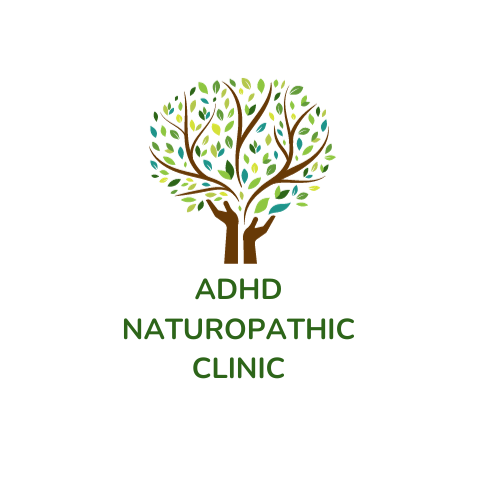When we think of lead exposure, most people imagine old houses with peeling paint or contaminated water pipes. While those are common sources, the truth is that lead is a persistent environmental toxin that can remain in the body for decades — and its effects are far-reaching.
Lead doesn’t simply “pass through” the body. It mimics and displaces minerals such as calcium, which is critical for healthy bone development, nerve signaling, and brain function. Once absorbed, lead is stored in bones, teeth, and soft tissues, where it can quietly disrupt biochemical processes for years. This hidden burden is why symptoms linked to lead exposure often show up gradually, across multiple systems in the body.
Lead and ADHD: More Than Behaviour
One of the clearest connections between lead exposure and health is its impact on the developing brain. Studies show that children with higher lead levels are more likely to experience:
- Impulsivity and hyperactivity
- Difficulty focusing or learning
- Aggression and irritability
-
Lower IQ and cognitive delays
This is because lead directly interferes with the way the nervous system transmits signals. At the microscopic level, calcium plays a key role in allowing neurons to release neurotransmitters — the chemical messengers that carry signals across synapses. When lead displaces calcium at these synapses, it disrupts the precise timing and flow of communication between brain cells. Instead of smooth, coordinated signalling, the brain experiences misfires, delays, or overstimulation. For a child, this might present as impulsivity, restlessness, or difficulty following instructions. In adults, it can look like brain fog, poor memory, or mood swings. What may appear outwardly as “bad behaviour” or even laziness is, in fact, a biochemical disruption caused by toxic interference at the cellular level.
Lead’s Impact Beyond ADHD
While ADHD and behavioural issues often get the spotlight, lead exposure contributes to many other conditions:
- Neurological conditions: memory problems, reduced processing speed, poor concentration, and increased risk of neurodegenerative diseases later in life.
- Mental health: links with anxiety, depression, mood swings, and irritability.
- Cardiovascular health: elevated blood pressure, arterial stiffness, and increased risk of heart disease.
- Hormonal imbalance: disruption of thyroid function and reproductive hormones.
- Immune dysregulation: greater susceptibility to infections or autoimmune activity.
- Kidney stress: lead is a nephrotoxin, impairing detoxification and mineral balance.
-
Bone health: lead stored in bone can be released during times of stress, pregnancy, or menopause, creating a “second wave” of toxicity later in life.
Generational Toxicity: The Hidden Hand-Me-Down
One of the most concerning aspects of lead exposure is its multi-generational impact. Lead has a long half-life in the body, particularly when stored in bones and teeth, where it can remain for decades. This means that if a parent or even a grandparent was exposed through sources such as lead-based paint, leaded petrol, old plumbing, or contaminated soil, their body may still hold onto a significant burden years later.
During pregnancy, when the mother’s body mobilises calcium from her bones to support the growing baby, stored lead can also be released into the bloodstream. From there, it can cross the placenta and embed itself into the developing brain and skeletal system of the unborn child. After birth, breastmilk can continue to be a route of transfer, further exposing infants during critical stages of neurological and immune development. This silent hand-me-down of toxins helps explain why children today may struggle with conditions linked to lead toxicity, even if their direct environmental exposure seems minimal.
This means that the behavioural challenges or chronic health conditions we see today may not just reflect current lifestyle or environment, but could also be the lingering result of exposures that occurred two or even three generations ago. The challenge is that these inherited toxic burdens are invisible — you can’t see them in a routine check-up or standard blood test. This is where Hair Tissue Mineral Analysis (HTMA) becomes invaluable, as it helps uncover stored heavy metals and mineral imbalances, giving us a clearer picture of how past exposures may still be shaping present health..
Why This Matters
Lead exposure is often invisible. You can’t see, taste, or feel it building up in your body, yet once stored in bones, brain, and soft tissues, it can stay there for decades. Its effects extend far beyond behaviour — disrupting neurotransmitters, weakening immunity, interfering with hormones, and even contributing to cardiovascular risk. This is why identifying toxic burdens through tools like Hair Tissue Mineral Analysis (HTMA) is so powerful. By detecting both stored heavy metals and key mineral imbalances, HTMA helps uncover what’s hidden, so a clear, personalised plan for detoxification and rebalancing can begin.
Taking the Next Step
If you or your child are experiencing hyperactivity, fatigue, mood swings, or other unexplained health challenges, hidden heavy metals could be contributing to these symptoms. The good news is that there are safe, effective ways to uncover and address these toxic burdens.
At my clinic, I use Hair Tissue Mineral Analysis (HTMA) and other functional tests to identify both mineral imbalances and heavy metal exposure. With this information, we can create a personalised plan — incorporating targeted nutrition, herbal support, and detoxification strategies — to help the body clear toxins and restore balance.
Ready to move beyond guesswork and get to the root cause? Book an appointment today. Together, we can support better focus, calmer moods, and stronger long-term health.
This blog is part of my series on Heavy Metals and Health. Next, we’ll explore mercury and its surprising role in mood, cognition, and immune resilience. Don’t miss it — sign up to my newsletter and get each article delivered straight to your inbox.
Disclaimer:
The information provided in this blog is for educational and informational purposes only and is not intended to replace individual medical advice, diagnosis, or treatment. Always consult with a qualified healthcare professional or your GP before starting any new health program, herbal supplement, or treatment—especially if you are pregnant, breastfeeding, taking medication, or have an existing medical condition. The content shared by Oak Tree Herbal Clinic is based on traditional and clinical herbal knowledge and is not intended to diagnose, treat, cure, or prevent any disease. Individual results may vary.

